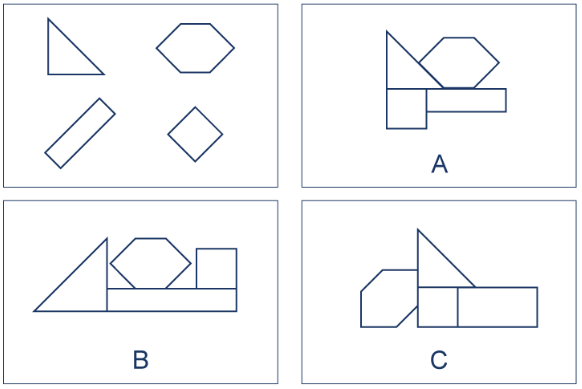Space visualisation-based questions are among the most prevalent under the reasoning category. The capacity to solve problems involving both two-dimensional and three-dimensional shapes and figures is known as space visualisation. In competitive examinations, these contribute among the most challenging questions. Students’ critical thinking skills are tested via space visualisation-based questions.
The General Intelligence and Reasoning based questions are asked in many competitive exams, such as SBI Specialist Officer, SSC CGL, IBPS RRB, IBPS PO, Clerk, Bank PO, RRB Para-Medical, Railway Group D Exams, SSC CPO, and SSC JHT. This article discusses space visualisation and the best technique to study it for exams.
Top Space visualisation Topics in SSC and Railways Exams
Dice
There are three photographs here of a cube-shaped dice. On each face of the dice, there will be a different set of numbers.
Cube
You may acquire one or several cubes here. You’ll be able to view some numbers or layouts on each of the cube’s visible sides. Aside from the photo, you’ll be asked to guess the number or arrangement on the other side.
Helpful Hints for Space Visualisation Problems
The guidelines for visualising space are relatively straightforward when tackling the problem. Using these techniques and tactics, we’ll be able to solve or prepare for space visualisation problems more effectively.
The questions are particular, so pay attention to them. A critical aspect of completing space visualisation questions in examinations is that essential keywords are buried in the question. These questions are easy to solve if you pay attention to the question, so take your time.
There is no set formula for visualising space. The most important thing is to keep practising. It’s possible to get an edge over space visualisation questions with practice.
While studying for the examinations, make an effort to test yourself regularly. Test your knowledge of space visualisation with free practice examinations online.
Another space visualisation problem-solving method is to keep a running tally of your progress as you go through the problem. You may jot down notes on spatial visualisation and make your own tips to solve them.
The ability to think logically is aided by seeing space. Analytical thinking abilities may be developed by taking space visualisation quizzes and solving them.
Space visualisation helps test-takers to process information more quickly. You’ll sharpen your thinking by answering these questions.
The use of spatial visualisation aids effective in efficient decision-making.
Common topics in problems requiring spatial thinking
Matching of shapes
Rotating Shapes
Reflections
Count the number of blocks images
Maps
Views from inside a cube
Spatial awareness assessments might be challenging to complete. However, even if they don’t need prior knowledge, the unusual structure of the questions, the creativity required to alter the visuals mentally, and the reasoning to get the answers without all the information is complex.
The best way to do well on a spatial exam is to get more familiar with the test and use these strategies for success.
A few solved reasoning questions with space visualisation
Q. From the shapes given on the top right corner, what figure can you make without any resizing?

Answer: A
Solution:
As we cannot resize, it means that the figure need to be compact. There shouldn’t be any space left between the shapes. So, we will use the triangle as it is but rotate the kite to get the square shape.
Once done, we will attach the square to the base of the right-angled triangle. The rectangle will be connected to the inner edge of the square such that the triangle’s base sits on the rectangle also. Now we are left with the hexagon only.
To fit this into the aampe, we will align the lower right edge of the hexagon so that it aligns perfectly with the hypotenuse of the triangle. The base of the hexagon must rest on the rectangle.
Q. If we rotate this figure along the vertical axis, what shape will it form correctly?

A. Let’s consider the xyz spatial coordinate system.
The origin is at top vertex from this figure. There, the alignment of the axes can be defined as:
The top horizontal edge is along the X-axis.
The slanting edge is along the Z-axis.
From the question, we need to rotate it along the vertical axis so that it can be in the XY plane instead of XZ plane. Taking the surface with the solid box, we have to pull it up till the figure sits straight on an imaginary ground.
Once done, the colored box will be on the top side, and the extended horizontal section will point towards the left.
Conclusion
The ability to think about things in three dimensions and make inferences about them based on limited knowledge is known as spatial thinking. The ability to think about how an item will seem when rotated may also be a strong suit for someone with strong spatial skills. Many real-world situations need these abilities, which may be honed with regular practice. To master the art of spatial reasoning, you need to visualise with the help of XYZ or 3D coordinate. Accordingly, align the figure’s edges with the axes such that the 2D shape can depend on a 2-axes plane – XY, YZ, and ZX planes.
 Profile
Profile Settings
Settings Refer your friends
Refer your friends Sign out
Sign out








